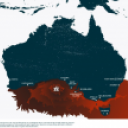Shaping rails


Got some pics?


you mean 'holy grail' not holy ghost unless a pyzel mated with a hayden shape


It actually depends on what sort of rails you want.
the basics are you cut bevels and blend them.
Check youtube for some precise tuition.


I'm so glad you asked...
https://seadragonsurfboards.com/2016/11/12/rail-bands/
This is a good place to start, but you should check out Swaylock's for more info. Just filter out the bullshit and stick to the actual shaping threads and you should be able to find everything you need and much, much, much more.


IT;S simple, for a 6' board you need 39 numbers , mark the rail of the board you are copying every 6'' and take 3 measurements.
To take these measurements you need one of those metal squares with the sliding ruler and a 6'' metal ruler with metric readings, it's more accurate to measure in mm.
You then have 13 numbers telling you where the apex of the rail is, 13 telling you how much the rail curves and meets the bottom of the board and 13 numbers showing the height of the rail curve to the glass lap on the deck .
Once you have all these numbers transfer to the board you are shaping and then draw lines between these points and you have your guidelines and you start bevelling.
Remembering to repeat what you do on the left, immediately do on the right, then compare, take your time and enjoy the fact that you are working at the slow rhythm of being a craftsman.
I usually shape the deck side to the rail apex first to about 90%, then do the bottom half of the rail, then blend.


That's a way more scientific approach than what I use Phil... I'm more of a feeling it out as I go kind of shaper.

First of all, I'm no master shaper (10 years, 20 or so boards), so take all the following with a grain of salt.
Using the image above as a guide, I start in the centre of the rail (i.e. halfway between nose & tail). The first deck rail band - purple in the diagram - is 60 degrees-ish (60 from the vertical, or 30 from the horizontal - depends how you're looking at it). If I'm using an electric planer, I'll start with shallow cuts, opening the mouth of the plane as I approach the mid-point of the cut then closing it up again as I approach the end. Each pass is a little longer than the last, until I'm about 15-20cm from both nose and tail. The foam is thinner at the ends, so I'll do those bits by hand to avoid a visit from the fuck-up fairy.
If the band's not as wide as I'd like it to be, I set the planer's mouth relatively shallow and just go over the band end to end until it's almost as wide as I want it. You want to sneak up on it, not rush to get it perfect. That FUF's a bitch and while you can always take a bit more foam off, you can't very easily put it back on.
If I'm doing it with a sanding block, I'll take a 60cm straight, flat piece of pine with 80-grit sandpaper glued to one wide surface and just walk the blank end to end. As with the planer, start your rail band in the middle of the board and slowly work your way out towards the ends with each subsequent pass, holding your board/sanding block perpendicular to the stringer line. As you approach the centre of the band, adjust the angle of the block until you're 45 degrees to the stringer, then bring it back to 90 as you approach the end of your pass. This is the equivalent of opening the planer's mouth and means more sandpaper is contacting the foam in the middle than at either end.
You then cut in your secondary bands (light blue), which break the corners of the initial band. Same process, sneaking up on the final width. Be careful to leave a narrow vertical band along the rail (wider in the middle than at either end) until you're ready to blend it all together. That's your final rail line and if you don't have this, your board's outline is going to be compromised.
At this point I usually cut in the narrow bottom band, at 45 degrees to both the rail and the bottom of the board. Then it's back to the deck to break the lines on the secondary bands, after which I use progressively finer grades of sanding gauze to blend it all into a pleasing curve.
That's my process and after a considerable learning curve, it works for me. You'll develop your own approach, the more boards you make, but you have to start somewhere.
Just remember, sneak up on it!

Hey all I’m just after some help, I’ve started making my first surfboard Based of a 5”11 Hayden shapes Holy Ghost, done the shape, concave and up to shaping the rails, just need a little help on how I go about shaping the rails? Just not sure how I make a start at it